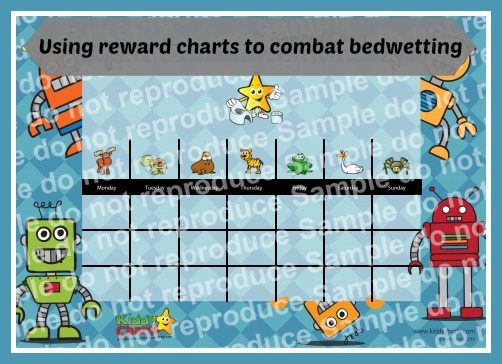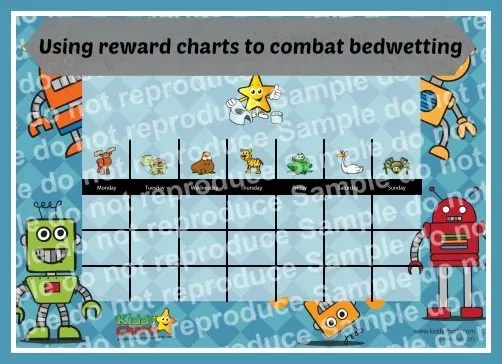

Reward charts have been known to help with so many of our parenting challenges. How to get children more involved with cleaning up their toys, doing their homework, taking out the trash…the list goes on and on.
But did you know that charts can also be an integral part of helping to end bedwetting, the condition that affects tens of millions of children around the world? It is important to note that while highlighting positive behavior in charts can often have wonderful results in changing an undesired behavior, with a condition such as bedwetting, it is often important to have the assistance of an external stimuli. In the treatment model we use, a safe and highly responsive bedwetting alarm is used in tandem with and to guide our progress charts.
Positive Reinforcement
One of the basic elements in the behavioral treatment we use to help end bedwetting is the use of positive reinforcements. While it sounds simple in nature, it needs to be executed in a very precise manner.
As a professional therapist, when we attempt to modify a behavior, our philosophy is always to emphasize the desired behavior while downplaying the undesired one.
For example, in the progress charts we use for our bedwetting treatments, we focus only on the desired behavior, by highlighting a night without accidents by placing a colored star.
We’ve seen some progress charts that use “sun” for a dry night and “rain” for a wet night. Our research has shown that this approach is not as effective since the undesired behavior is also being emphasized.
Our charts work with various levels of reinforcement – short term, mid term and long term. We reward with a small blue star for a single dry night, a larger red star after four consecutive dry nights and finally the coveted gold star that so many charts use when the child is dry for a few weeks. The child needs to strive for higher goals while in the meantime receiving positive reinforcements during the whole process.
As is common among chore charts, the positive reinforcement will have the most effect for the child if given immediately after the act is done, in this case when the child wakes in the morning in a dry bed.
Reward?
Parents often ask me if they should add small prizes in addition to the stickers/stars. From my experience, the stars are more than enough reward for the child and no other prizes should be added. However, when the child finishes the treatment and is successful at being dry at night, they can be rewarded for their accomplishment and reaching this important milestone in life.
Have you used reward charts to combat bedwetting? Did you find it successful? We would love to hear your thoughts .. please leave a comment below.
Do you like this blog? To keep updated with all the latest news and views from Kiddycharts, subscribe to our newsletter below:
[mc4wp_form]

Sharon Porter
Friday 21st of July 2017
Need help to stop my 9yr old bed wetting
Lauren DePerelli
Tuesday 10th of October 2017
I have the same problem with my son, Sharon. He just turned 11 at the beginning of October. I'd love to talk with other parents going through this.